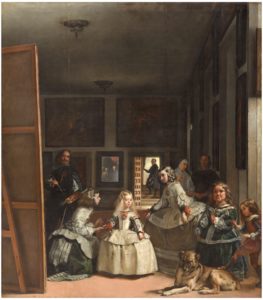Since 2018, Madrid has hosted an extensive public art display during the last few months of the year. Right now, the streets of the Spanish capital are a public gallery with dozens of sculptures appearing on the sidewalks and in the city’s squares. While they are identical in shape, each sculpture is unique regarding its paint job and decoration. They all take the form of a figure in a large farthingale skirt, modeled after one of the figures in Las Meninas by Diego Velázquez, arguably Spain’s most famous painting. They populate Madrid’s streets between October and December. You would think that many Spaniards would embrace these sculptures as a fun, colorful way of celebrating their country’s history and culture, but for many, that is not the case.
Several Spanish writers and art critics seem to loathe the Meninas sculptures, with Elena Vozmediano of El Español calling them “hollow and banal,” having nothing to do with Velázquez. Another critic, Carlos Delgado, hoped that “someone with discretion manages to stop such embarrassment.” Much of the criticism these sculptures receive is that they symbolize the increasing commercialization of the city and its streets. This is especially true for this new batch of Meninas since private corporations, like Lego, Volvo, and Avon, rather than individual celebrities and public figures, are sponsoring and designing the sculptures this year. So if you’re in Madrid and are going out to look at the architecture or visit a museum, don’t be surprised if you see an odd-looking, bulbous sculpture with the Visa logo stamped all over it. On this point, one of the project’s most outspoken critics has been Andrea Levy, head of Madrid’s Department of Culture, Tourism, and Sport. Levy has also touched on the project’s new commercial nature, lamenting, “We are no longer talking about a cultural initiative.” Even one of the foremost experts on Velázquez, the art historian Fernando Marías, has been critical of the Meninas, saying that they are fun as an installation but do not educate the public about Velazquez and Spanish art in general.
After the sculptures are taken down in December, many are auctioned off for charity. But regardless, art industry professionals have continued in their criticism of the Meninas. Members of the public have also expressed their dislike since many of the sculptures have been targets of vandalism. No announcement has been made on whether the Meninas will reappear next October. So, I guess we’ll see.

